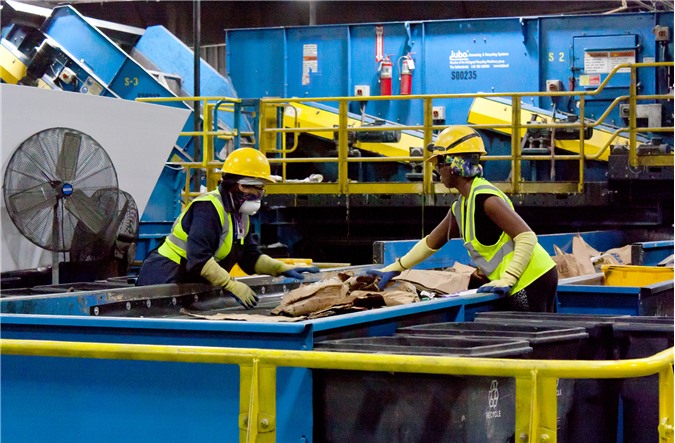The physical economy mapping of an area can become a new tool for uncovering potential linkages between industries, thereby identifying opportunities to reduce waste and carbon emissions.
"Climate and the economy are important issues that we shouldn't make mistakes of," said Shweta Singh, an interdisciplinary scientist at Purdue University (USA) who developed the tool. “This tool provides the overview, allowing policymakers and industry to participate in change and see the results. Stakeholders can virtualize multiple options before making a decision.”
Past zero-waste and low-carbon efforts have focused on only one part of the industrial flow, such as reducing energy use in a single manufacturing process. However, we need to see the system as a whole to make the best choices and make the most effective investments in emerging technologies for overall improvement.
This tool uses physical principles, mechanical models from physics, engineering and biology to automatically map the physical economy much faster than traditional methods. “With this modeling tool, we can do things that normally take 100 days in just one day,” she says. “Current mapping methods are very slow and time-consuming. By considering each economic sector as a process that takes resources through physical changes to create a product, we are able to use mechanical models to map with a multi-layered view of the material economy. As a result, we can make changes and witness the chain of events from process to sector to the whole economy.”
Using tools to map the physical economy of Illinois, USA, in 10 areas related to agriculture, from farming to product processing, the model has been shown connections between them and made highlighted for the opportunities for recycling at scale to reduce waste. The results show that the application of industrial wastewater treatment technologies and pig manure recycling will have the greatest impact by reducing more than 62% of pig manure waste, 96% of dry milled cornmeal and 99% of discarded soybean pods. “We also found indirect links, such as the recycling of pig waste leading to reduced emissions during production,” commented Singh. “In the supply chain, experts talk about tier one, second and third impact. Tertiary effects may not be obvious, but they are. Tertiary impacts are now transparent and we can quickly identify their impact.”
Singh has filed this modeling tool with the Purdue Research Foundation's Office of Technology Commercialization, where the patent for intellectual property is registered.
Ha Tran

 Promoting the cold storage market to optimize the strengths of agricultural products
Promoting the cold storage market to optimize the strengths of agricultural products
.jpg?w=280&h=160&mode=crop) Greening the textile industry from the perspective of ESCO model
Greening the textile industry from the perspective of ESCO model
 VICEM strives towards sustainable development
VICEM strives towards sustainable development
 Develop new tool to reduce, reuse and recycle in industry
Develop new tool to reduce, reuse and recycle in industry
 Bac Kan promotes sustainable production and consumption
Bac Kan promotes sustainable production and consumption
 Germany's new plant produces zero-emission jet fuel
Germany's new plant produces zero-emission jet fuel
 Encouraging results from watershed pollution control
Encouraging results from watershed pollution control
.jpg?w=280&h=160&mode=crop) Promote energy labeling towards high efficiency products
Promote energy labeling towards high efficiency products